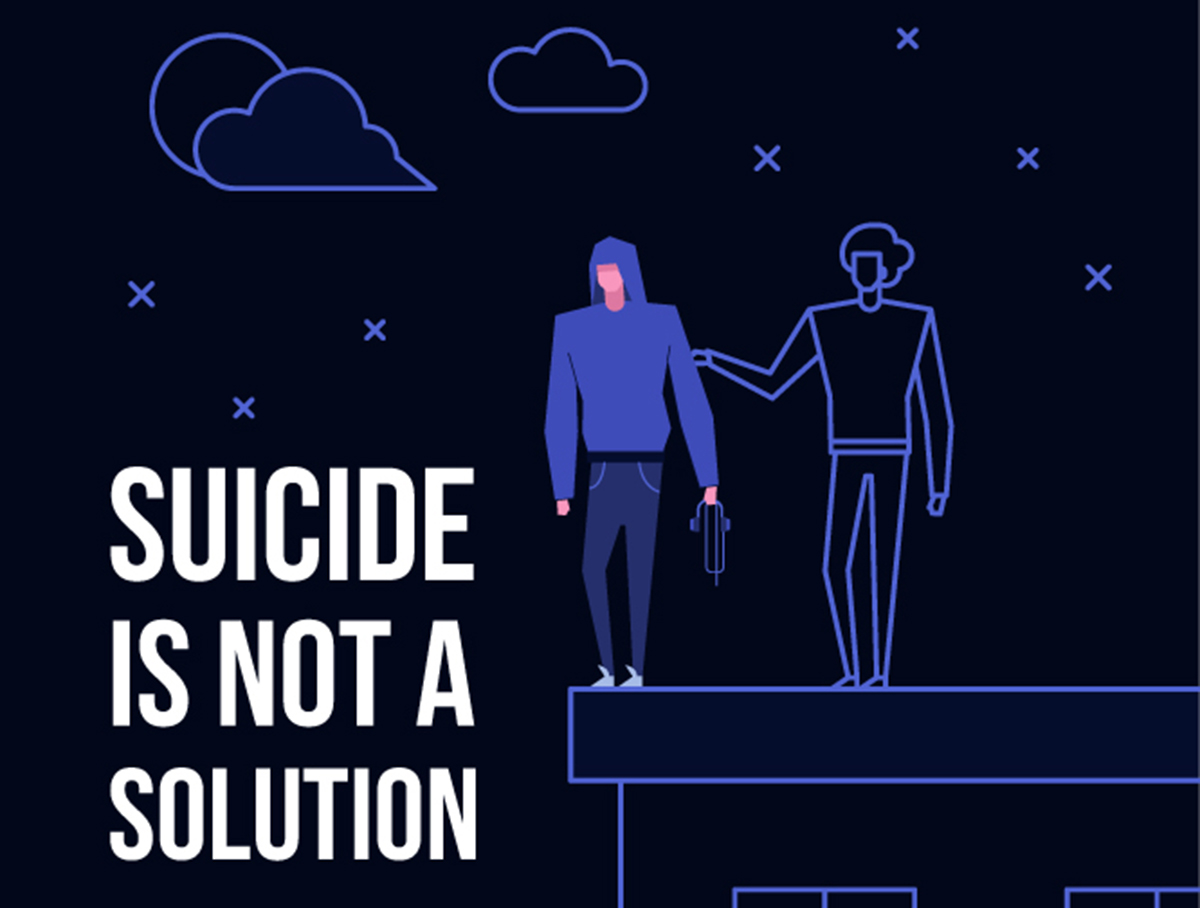
The majority of people who experience suicidal ideation do not act them out and end their lives, although some may make suicide attempts. Suicide is a devastating tragedy and one that’s sadly becoming more common. It is becoming increasingly important to be able to recognize the warning signs, and know about common risk factors such as family history mental health issues and recent personal losses or stressors. Therefore friends and family may just be able to intervene at the right time and divert someone's course of action.
What are the common signs and symptoms of someone experiencing suicidal ideation?
-
They may report feeling trapped or hopeless.
-
They may describe feeling overwhelming emotional pain.
-
They may have an unusual preoccupation with violence, dying, or death.
-
They may have mood swings – these can be happiness or sadness.
-
They may talk about revenge, guilt, or shame.
-
They may appear agitated, or highly anxious.
-
They may undergo personality changes, change their routine, or adopt different sleeping patterns.
-
They may begin consuming substances for the first time or more than usual.
-
They may engage in risk-taking behavior.
-
They may appear to be organizing their affairs and giving things away
-
They may purchase a weapon or other tools that could be used to facilitate suicide.
-
They may be already known to be suffering with depression or anxiety.
-
They may have been isolating themselves more than usual.
-
They may refer to seeing themselves as “a burden”.
-
Signs of agitation may be evident, especially those of a more physical nature such as pacing or frequent hand movements.
-
Friends and family may notice them “saying their goodbyes” as though it is the last time.
-
They may be suffering from anhedonia – that is, the inability to experience pleasure from normally enjoyable experiences.
-
They may be severely remorseful and self-critical.
-
They may discuss suicide or dying or say they wish they were no longer alive or had never been born.
Where people sadly are successful in their attempt, the tragic nature of suicide cannot be emphasized enough: apart from the devastation it causes to friends and family, it has significant costs to society. According to a recent survey in the USA, suicide rates were at their highest in decades in 2017: in that one year, 47,000 Americans died as a result of suicide. Between 2016 and 2017, the rate of suicide in the US increased by nearly four percent; and one of the characteristics associated with this increase is the presence of an anxiety disorder.
As the best indicator of future risk is past behavior, suicide attempts are regarded as strong risk factors for future completed suicides. A previous attempt is a major risk factor for a future attempt: statistics indicate that a previous attempt increases the risk of death by suicide by as many as 30–40 times increased risk.
How are anxiety disorders associated with increased risk of suicidal behavior?
Anxiety disorders have long been associated with increased risk of suicidal behavior in a range of studies but the connection has long been subject to considerable debate, not least as the issue is confused by high levels of co-morbidity found within anxiety disorders themselves. For example, it is argued that it is the co-morbidity itself rather than the presence of the anxiety disorder, that leads to increased suicidal behavior. Where personality disorders co-exist with panic disorder and PTSD there appears to be a strong risk of suicide attempts, which supports this notion that co-morbidity is the key. However, studies have adjusted for multiple disorders and explored the data and found that heightened risk remains even in the absence of personality disorder, leading it to be argued that anxiety is an independent risk factor in itself.
Pre-existing anxiety disorder especially is an independent risk factor for subsequent onset of ideation and attempts, and the data supports the idea that co-morbid anxiety disorders accentuate the risk of suicide attempts in persons with other mood disorders. One study found that twenty percent of study participants with panic disorder and 12 percent of those with panic attacks had made suicide attempts; and none of the participants had pre-existing or co-morbid depression or substance misuse (in itself a factor that increases risk).
In another study social anxiety disorder (SAD), post-traumatic stress disorder (PTSD), generalized anxiety disorder (GAD), and panic disorder (PD) were found to be specific predictors of suicidal thoughts; whereas only SAD, PTSD, and GAD were predictive of actual attempts. Gender analyses suggested that all four disorders predicted suicidal thinking or acting out in women; whereas only PTSD and PD served as risk factors for men.
Forewarned is forearmed and especially in this case – the evidence is strong that anxiety disorders, especially panic disorder and PTSD, are independently associated with suicide attempts. Clinicians need to assess suicidal behavior among patients presenting with anxiety problems and increased knowledge of signs and symptoms disseminated so that loved ones and communities can arrest this increasing trend.
- www.ncbi.nlm.nih.gov/pmc/articles/PMC2940247/
- www.ncbi.nlm.nih.gov/pubmed/16275812
- / https://www.ncbi.nlm.nih.gov/pubmed/2797086/
- www.cambridge.org/core/journals/the-british-journal-of-psychiatry/article/panic-and-suicidal-behaviour/2765E672031225E4D275783E2E4B216D
- www.ncbi.nlm.nih.gov/pubmed/19147159/
- www.nationalelfservice.net/mental-health/anxiety/patients-with-anxiety-disorders-are-more-likely-to-have-suicidal-thoughts-and-actions-says-recent-review/
- Kanwar A, Malik S, Prokop LJ, Sim LA, Feldstein D, Wang Z, Murad MH.The association between anxiety disorders and suicidal behaviors: a systematic review and meta-analysis. Depression & Anxiety. Feb 13. doi: 10.1002/da.22074.
- www.cdc.gov/nchs/products/databriefs/db330.htm
- www.ncbi.nlm.nih.gov/pmc/articles/PMC1924761/
- www.ncbi.nlm.nih.gov/pubmed/15535790
- www.ncbi.nlm.nih.gov/pubmed/7551614
- Murphy SL, Xu JQ, Kochanek KD, Arias E. Mortality in the United States. https://www.cdc.gov/nchs/products/databriefs/db328.htm
- www.psychiatrictimes.com/opioid-epidemic/us-life-expectancy-mental-health-perspective
- Photo courtesy of SteadyHealth.com


Your thoughts on this